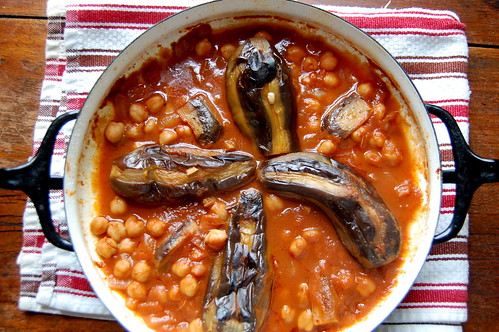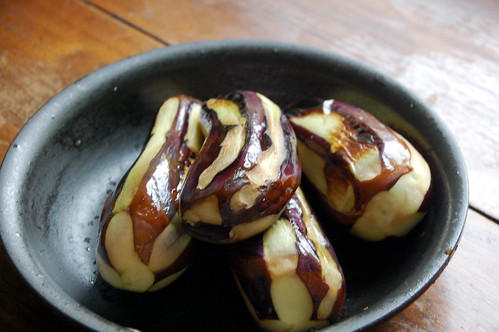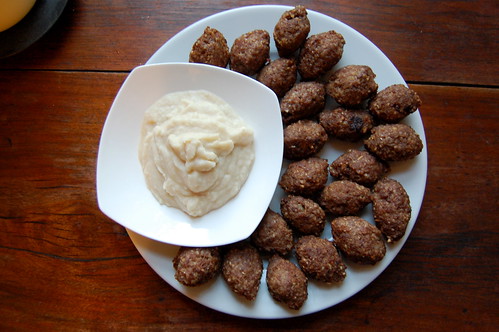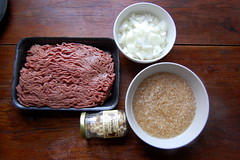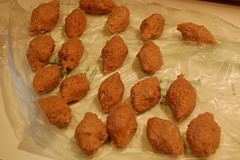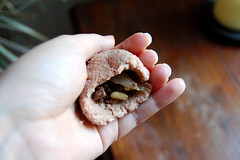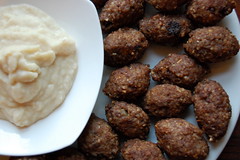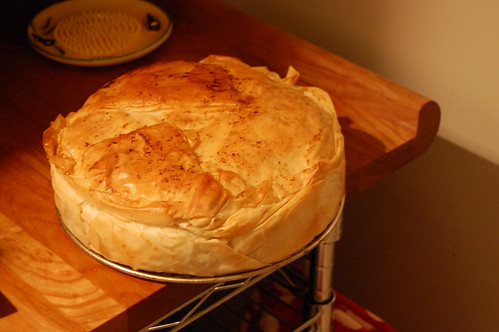
Most of the food I post on here is Levantine cuisine- food from Lebanon, Syria, Jordan or Egypt. I cook a fair amount of other Middle Eastern food, odd dishes from Tunisia or Iraq, Iran or Morocco, and I've long wondered if I should move into a new phase for this blog, exploring those cuisines more. I went through a phase exploring Yemeni breads, but let's just say that not all my experiments were successful.
One of the reasons I like exploring Levantine cuisine is that it is very codified. Maybe it's the French influence in Lebanon, or maybe it's the history of Lebanese cuisine, of traditional preserving (moune) and seasonal cooking. I've often thought about delving into Moroccan cooking for much the same reason, like Levantine cuisine, there are unique pairings, techniques, and ingredients.
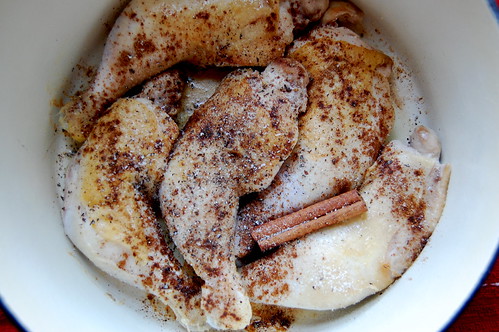
Bisteeya is the queen of Moroccan dishes, a towering pie wrapped in phyllo dough and crammed with squab, eggs and almonds. I've always been curious to make bisteeya (also spelled pastilla, bastilla, etc) because it's unlike anything I've ever made before. I was also confused on how you could make a pie with 10 eggs in it without making a runny mess.
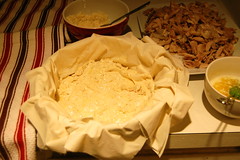
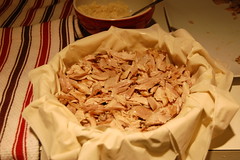
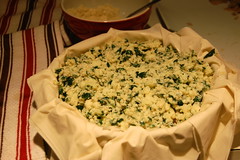
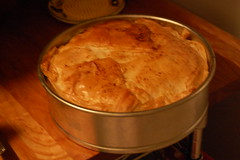
On the surface, when you look at bisteeya, you don't think it's going to taste very good- it has shredded chicken or squab, soft scrambled eggs, and sweetened ground almonds. But in reality, it's delicious. You cook the eggs in some of the poultry stock, so that they infuse with the chicken-y flavor and spices, and then drain them so they don't make the pie soggy. The almonds add just a right note of sweetness, something Moroccans love. And really, the whole thing is wrapped in buttery flaky phyllo dough, and who doesn't like that?
Paul said this was one of the best thing I've ever made, but this was coming from a man obsessed with pies of all forms. But I'd be inclined to agree, despite the work involved, I'd make this again in a heartbeat.
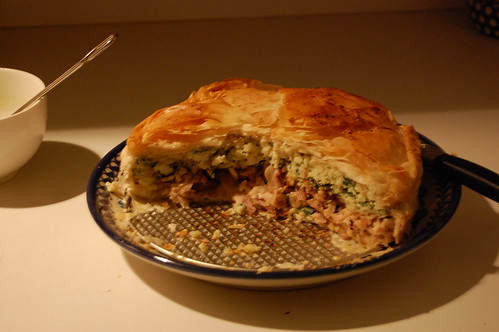
Bisteeya
Traditionally, a Moroccan pastry called waraka, which is shiny on one side and porous on the other, is used in place of the phyllo. I find phyllo is an easy substitute. Though squab is the traditional filling for the pie, I used chicken legs, whose meaty flavor echoes the gaminess of the squab, but which are a bit easier to find and work with. Adapted from Paula Wolfert.
1 box phyllo dough, defrosted
1/2 cup of butter, clarified, or use ghee or samneh
10 eggs
1 large bunch of flat leaf parsley, stems removed and leaves chopped
4 or 5 large chicken legs and thighs (or 4 squabs or 1 whole chicken, cut into pieces)
2 garlic cloves
2 cinnamon sticks
1/4 teaspoon turmeric
3/4 teaspoon ground ginger
1/4 teaspoon allspice
1 scant teaspoon fresh ground black pepper or grains of paradise
2 cups whole blanched almonds
a scant 1/2 cup powdered sugar
1. Rinse the chicken and pat dry. Heat some oil in a dutch oven. Saute the chicken until lightly browned, then sprinkle salt, turmeric, ginger allspice, and pepper over the chicken. Add water to cover and add the cinnamon sticks and garlic cloves. Bring to a boil, then cover and simmer for 1 hour, or until meat is tender.
2. Reserve the broth and let the chicken cool. Shred the chicken meat, discarding skin and bone, and set aside.
3. Meanwhile, bring 2 cups of the broth to a simmer in a saucepan. Beat together the eggs, then add to the broth. Cook the eggs, stirring constantly, until the eggs congeal and look like well-scrambled eggs. Stir in the parsley and some salt and pepper in the last few minutes of cooking. Place egg mixture in a fine mesh strainer or colander lined with cheesecloth and let drain for 20-30 minutes.
4. Meanwhile, roughly grind the almonds in a spice grinder or food processor. Toss with the sugar.
5. Preheat oven to 425 F. Using a springform pan, rub the inside lightly with clarified butter. Lay out your phyllo and cover with a towel. Layer 7-8 sheets of phyllo in the bottom of the pan, brushing each with butter, and letting the edges overhang.
6. Sprinkle half the almond mixture over the bottom. Top with all of the shredded chicken. Top with the strained egg mixture, then top with the remaining almonds. Fold the phyllo over, and top with more sheets of phyllo, brushing each with butter and tucking the ends down into the pan. Brush top with butter and pour some of the remaining butter over the bisteeya.
7. Bake for 20 minutes at 425, until top is golden. Reduce temperature to 350 and bake another 10-15 minutes, until pie is golden brown. If desired, sprinkle top with powdered sugar and cinnamon.

